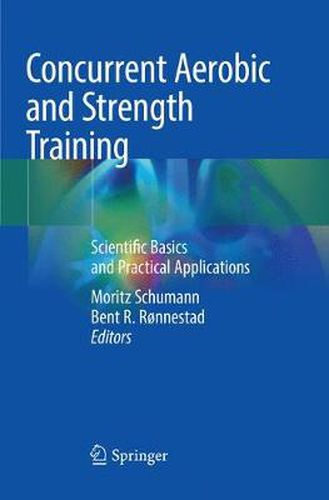Readings Newsletter
Become a Readings Member to make your shopping experience even easier.
Sign in or sign up for free!
You’re not far away from qualifying for FREE standard shipping within Australia
You’ve qualified for FREE standard shipping within Australia
The cart is loading…






This book provides an extensive guide for exercise and health professionals, students, scientists, sport coaches, athletes of various sports and those with a general interest in concurrent aerobic and strength training. Following a brief historical overview of the past decades of research on concurrent training, in section 1 the epigenetic as well as physiological and neuromuscular differences of aerobic and strength training are discussed. Thereafter, section 2 aims at providing an up-to-date analysis of existing explanations for the interference phenomenon, while in section 3 the training-methodological difficulties of combined aerobic and strength training are elucidated. In section 4 and 5, the theoretical considerations reviewed in previous sections will then be practically applied to specific populations, ranging from children and elderly to athletes of various sports. Concurrent Aerobic and Strength Training: Scientific Basics and Practical Applications is a novel book on one of the hot topics of exercise training. The Editors’ highest priority is to make this book an easily understandable and at the same time scientifically supported guide for the daily practice.
$9.00 standard shipping within Australia
FREE standard shipping within Australia for orders over $100.00
Express & International shipping calculated at checkout
This book provides an extensive guide for exercise and health professionals, students, scientists, sport coaches, athletes of various sports and those with a general interest in concurrent aerobic and strength training. Following a brief historical overview of the past decades of research on concurrent training, in section 1 the epigenetic as well as physiological and neuromuscular differences of aerobic and strength training are discussed. Thereafter, section 2 aims at providing an up-to-date analysis of existing explanations for the interference phenomenon, while in section 3 the training-methodological difficulties of combined aerobic and strength training are elucidated. In section 4 and 5, the theoretical considerations reviewed in previous sections will then be practically applied to specific populations, ranging from children and elderly to athletes of various sports. Concurrent Aerobic and Strength Training: Scientific Basics and Practical Applications is a novel book on one of the hot topics of exercise training. The Editors’ highest priority is to make this book an easily understandable and at the same time scientifically supported guide for the daily practice.